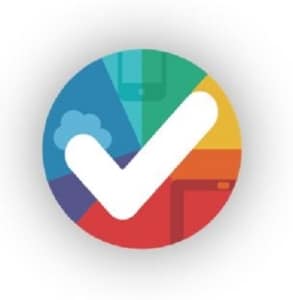

Phil Hearn: Blogger, Writer & Founder of MRDC Software Ltd.
How to evaluate MRDCL, our scripted tabulation software
Evaluating any market research software package whether it is for CAPI, CATI, CAWI, crosstabs, reporting or any other task is not easy. Deciding what is best for your business will need to take into consideration functionality and, of course, pricing, but it is easy to neglect support and productivity and, perhaps, promote aesthetic things such as look and feel.
Why is there a blog article about evaluating MRDCL?
The reason for producing this blog article is not because MRDCL is any different to any other software, but because a full evaluation of MRDCL can be a lengthy process and, as with any lengthy process, it is easy to miss what might be considered crucial parts of the evaluation process.
- If you want to watch our 40-minute video which gives you: a) an overview of MRDCL b) the basics of MRDCL c) two practical examples of how MRDCL will improve your productivity. You can view the video here.
- If you just want our step by step guide to evaluating MRDCL, click here.
Why is evaluating MRDCL so difficult?
Let’s start by covering why evaluating MRDCL is difficult. As a powerful scripting language, it takes time to feel comfortable using the software – this is true of any scripting language, particularly ones that have so much power as MRDCL. It’s rather like asking someone who hasn’t driven a car before to evaluate how good a car is. That familiarisation process takes time. If you are switching from another tabulation software product, it is going to feel uncomfortable at first even for relatively simple tasks.
So, what is this guide all about?
The purpose of this guide is to highlight the things that are important and to help to give a structure to the evaluation process. Let’s stick with the four things cited in my opening paragraph – functionality, pricing, support and productivity taking each in turn.
-
Functionality
Functionality, particularly with a scripting language like MRDCL, breaks down into two entirely separate areas – Can the software do something? And, how easy it is to do that something? Establishing whether MRDCL can do something is easy. You can send us a checklist, explore the online help or just ask a direct question. How easy takes time. It means getting over that initial hump or learning the basics and being able to assess how easy something is. The reality is that it’s impossible to check everything. You can, however, test 4 or 5 commonly needed types of data handling or analysis to get a feel for how easy MRDCL is to use.
-
Pricing
Again, this is easy on the surface, but more complex than it might appear. Any software supplier can give you a price to use their software, but that misses several important points. Products like MRDCL tend to be used day in day out by a team of people. In such cases, the cost of the software itself becomes a small part of the total cost. And, perhaps, more importantly, the more advanced that a software product is, the more likely it is that its efficiency or lack of efficiency will have a bigger impact. For example, if you are using an online tool that handles mail merges for your company, the cost may vary between, say, $10 per month and $50 per month and the staff time will be negligible. In such cases, you would, in most cases, choose the cheapest option that does what you want. In the case of programming and scripting languages, I have seen projects that are handled as much as 10 or more times more efficiently using MRDCL. I have seen projects that were taking 30 man-days per month reduced to 2 man-days per month using MRDCL. In those cases, the cost of the software is almost irrelevant; it’s the staff time that is the key cost.
-
Support
Evaluating support from potential software providers is difficult. The software provider can claim what they like, but it’s hard to know what level of service you will receive until you have signed up. You may feel you face the same obstacles with MRDC. However, when evaluating a product like MRDCL, you will become familiar with our support levels and can make a clearer assessment. Also, we provide over 50 videos that help you from getting started as well as many advanced topics. Finally, we recently published what our support includes because we believe it is a lot more than most other software suppliers – check it here – https://www.mrdcsoftware.com/blog/market-research-software-licence-subscription.
-
Productivity
I would accept that this is something of a repeat in this blog article as it was covered under ‘pricing’, but we firmly believe that productivity is the most important reason why you should choose MRDCL. During an evaluation, it is easy to focus on functionality, but understanding the advanced features that can dramatically improve your productivity is crucial. Here are some of the things that make MRDCL different:
- You can build your own custom templates to simplify both complex or labour-intensive tasks
- You can build your own custom templates which mean that everyone in your team works to the same standards sharing resources
- Projects can easily be shared – something that most scripting languages do not easily allow
- Project sharing means simplistically that senior staff can do the difficult parts and junior staff can handle the easier parts – this reduces costs and paves the way to a more flexible workforce
- Using templates makes the project work more easily accessible. Traditionally, scripted solutions are difficult for others to take over when someone leaves, is ill or moves on to a new role. Templates mean that understanding the logic behind complex specifications is highly simplified and intuitive.
- The design of MRDCL means that errors are minimised. In my experience, nearly all scripting staff underestimate the time they spend correcting and fixing errors – myself, included!
Evaluating MRDCL the right way
This brings me back to how MRDCL and scripting programs like MRDCL should be evaluated, in my view. Firstly, I think it’s important to ensure you have the time to evaluate MRDCL fully. Secondly, I think it’s important not to miss a step. Each step is important.
Comparing MRDCL to your current software
If you are planning to transition from another product to MRDCL, I think it is important to avoid comparing like for like and embracing how MRDCL approaches some things differently. As an example of this, I have seen MRDCL trialists converting from older products like Quantum in the wrong way. The evaluation has been based on effectively translating Quantum scripts to MRDCL scripts, in the same way, I may translate my English to my schoolboy-level French. This approach works to a level, but it doesn’t take in the different approaches MRDCL offers that really make a difference – the things I’ve highlighted particularly in the ‘Productivity’ paragraph above. MRDCL is focused on productivity with approaches that handle many complex and time-consuming tasks in a completely different way to any other product on the market.
So, here’s my recommended 6-week evaluation plan – this plan shouldn’t take all your time, but you will need at least one day per week. It’s not to say that this is the ‘perfect plan’ for everyone, but it should act as a guide and checklist to ensure that you get the most from your MRDCL evaluation. Here it is:
- Pre-evaluation – Watch the MRDCL introductory video (40 minutes). Produce a checklist of features that you need if you are unsure whether MRDCL meets your needs. MRDC will respond to your list with candid answers.
- Week 1 – Watch introductory MRDCL videos to learn the basics. It is usually a good idea to ask us to recommend a programme of videos for you based on your experience and goals. Seek support if anything is unclear. Attempt first simple task to become familiar with MRDCL’s language – this can be a brief frustrating period.
- Week 2 – Think of 2 or 3 examples of things that are not straightforward that you would need to do in MRDCL. Watch the videos related to these topics or ask MRDC to explain the best practice.
- Week 3 – Produce a list of anything that is not clear to you. Arrange an online session with MRDC to fast track you to the next level. Ask MRDC to look at your work in the first two weeks to see if it could be improved.
- Week 4 – Try to produce results for a real project. Don’t pick the easiest project and don’t pick the hardest project. Seek help from MRDC if you need it. Ask MRDC to evaluate the work you have produced.
- Week 5 – Consider all the challenges that you feel you need to understand in using MRDCL. If there are videos, covering the topics, that’s fine, but if not ask MRDC to prepare an online session to explain concepts and show examples.
- Week 6 – Now, look at MRDCL’s productivity features and understand ways that you can use a template to make everything you’ve learnt even more efficient. This is arguably the most important part of the process, but it only makes sense to evaluate last. Try a couple of examples.
- Need more time? Let’s talk and see how we can best work together.
Download a checklist of the MRDCL’s Evaluation Guide here
If you are asking yourself the question ‘Is MRDCL right for me?’ click here to watch a video that will help answer this very question.
We also have a number of MRDCL fundamentals videos to support you with getting started and when using the software, click here to view these videos.
If you want to evaluate MRDCL, contact sales@mrdcsoftware.com who will be pleased to help you.







